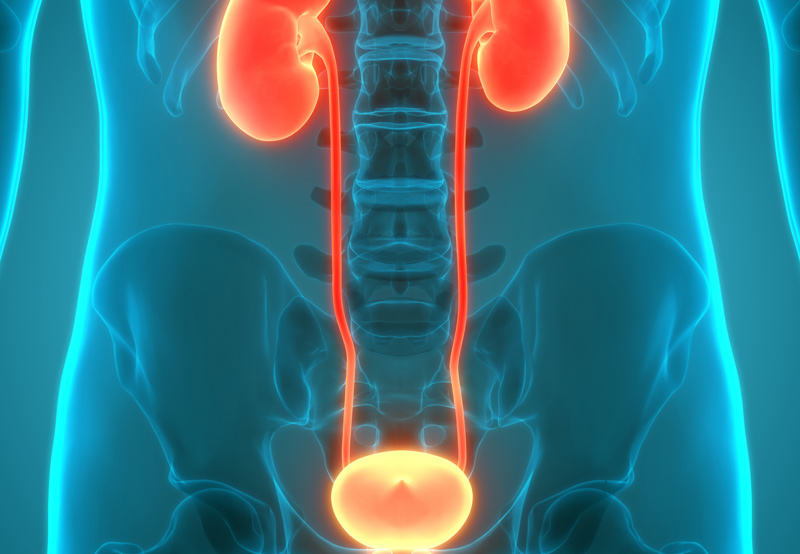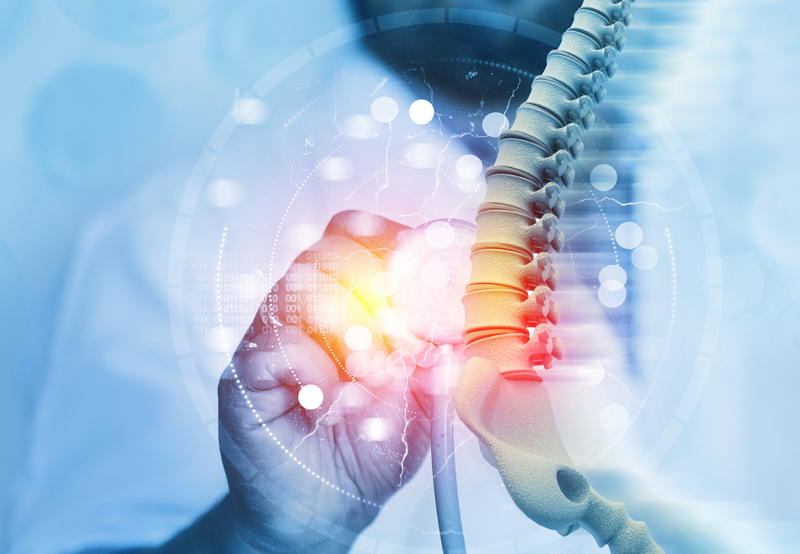

Neurogenic bladder is characterized by inability to control the bladder due to problems with the brain, spinal cord, or nerves. Individuals with multiple sclerosis (MS), spina bifida, Parkinson’s disease, spinal cord injury, diabetes, and other illnesses may have neurogenic bladder. Stroke and major pelvic surgery can also cause the condition.
Muscles and nerves work together to help the bladder hold urine until the individual is ready to urinate. Damage to the nerves that send messages between the brain and muscles that control the bladder may keep the muscles from tightening or relaxing at the right time. This can cause the bladder not to fill or empty properly.
How the Urinary System Functions
A healthy urinary system has kidneys that make urine and pass it to the bladder, a balloon-shaped organ that stores the urine until it’s time to urinate. The bladder is held in place by pelvic muscles in the lower part of the abdomen. During urination, urine passes through the urethra.
When the bladder isn’t full, it’s relaxed. But when it’s getting full, nerve signals in the brain let the individual know it’s time to urinate. Right before urination, the brain tells the bladder muscles to squeeze, forcing urine out through the urethra and the sphincters.

Causes of Neurogenic Bladder
Individuals with overactive bladder have overactive muscles that squeeze more often than normal. In other instances, the sphincter muscles are weak and allow urine to pass before the individual has reached the bathroom.
Individuals with an underactive bladder may have malfunctioning muscles that won’t squeeze when the bladder is full. The sphincter muscles may also fail to loosen when the individual is trying to urinate. Some individuals may experience both overactive and underactive bladder.
Symptoms of Neurogenic Bladder
Individuals with the condition may experience:
- Urinary tract infection (caused by harmful bacteria, viruses, or yeast growing in the urinary tract)
- Leaking urine before the individual has reached a bathroom
- Frequent urination, more than eight times in 24 hours
- Dribbling during urination
- Inability to empty the bladder
Diagnosing Neurogenic Bladder
To diagnose the condition, the physician will review the patient’s medical history and ask questions about their daily habits. The patient will need to list the symptoms they’re having, how long they’ve had them, and explain how the symptoms are impacting daily life.
In addition, the physician will need a list of the patient’s over-the-counter and prescription drugs. During the appointment, the patient will answer questions about their diet and fluid intake during the day.
A bladder diary may be necessary to track how often the patient urinates and what time they leak urine. A pad test may also be done.
Women experiencing symptoms of neurogenic bladder will have their abdomen, pelvis, and rectum examined. For male patients, the physician will examine their prostate, rectum, and abdomen.
Other tests that may be done to diagnose neurogenic bladder include urine cultures test, bladder scans, cystoscopy, urodynamic testing, and imaging tests.
Treatment Options
Depending on the patient’s age, symptoms, and tolerance for treatment, the physician may recommend making lifestyle changes. Medical treatments may include overactive bladder medications, catheters, Botox injections, sacral neuromodulation, percutaneous tibial nerve stimulation (PTNS), bladder augmentation, urinary diversion, or other complex abdominal surgeries.
